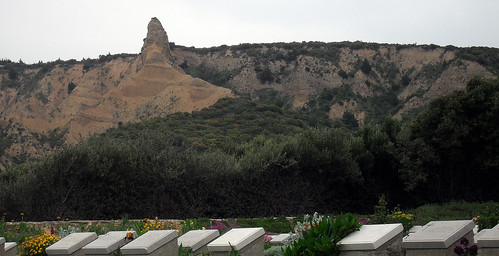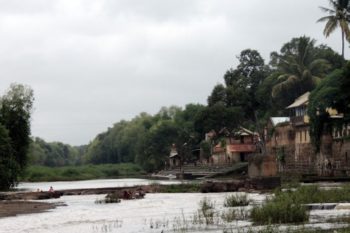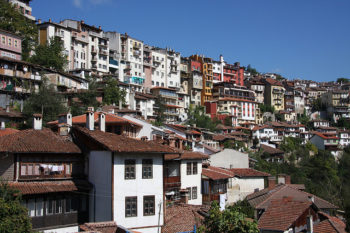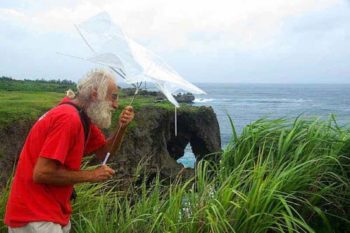Last month marked the 95th anniversary of the Anzacs landing at Gallipoli.
Each year on the 25th April Anzac Day is commemorated as a public holiday in Australia and New Zealand. On this day we honor the WWI Australian and New Zealand Army Corps (Anzacs) who landed at Gallipoli, Turkey, on 25th April 1915. It also signifies a time we remember all who have served and died in wars, conflicts, and peacekeeping missions.
The Anzacs aimed to capture the Gallipoli peninsula allowing the allied forces access to the Black Sea, however, navigational errors meant the Anzacs arrived further along the coastline at Ari Burnu, later known as Anzac Cove. Instead of the gently sloping beach they were expecting, they encountered sheer cliffs and ridges where they were fired upon by Turkish troops.
After considering a withdrawal, senior commanders feared greater fatalities and the Anzacs were instructed to “dig in”. They built kilometers of trenches, earning their nickname “the diggers”, and here they remained for the eight month campaign. In this time 8,709 Australians and 2,721 New Zealanders died.
Initially, I was reluctant to visit Gallipoli on Anzac day after hearing stories of drunken backpackers littering the area with beer cans and camping on gravesites. But increased security and a ban on alcohol, means the drunken celebrations have been replaced by both sober and somber commemorations.
We arrived at Gallipoli at midnight, huddling in sleeping bags and warming up with apple tea while listening to on-site interviews and performances. At 5:30am the morning sun lit up the sphinx and the rocks across Anzac cove. It signaled the beginning of the dawn service, held at the time of the original landing. Following the readings, prayers and hymns, we sung the Australian national anthem and a lone bugle played “The Last Post”. A respectful silence fell over the crowd.
Looking out across the Gallipoli coastline, the Aegean Sea calmly washed against the pebble beach of Anzac Cove. A slight breeze shook through the shrubs of the sandy valleys and ridges that shaped the landscape. It was a view that could be described as “picturesque” – a landscape vastly different to what I’d expected – and one that could easily be mistaken for an Australian coastline. This feeling was shared by the Anzacs too who observed how peaceful the peninsula could have been if they weren’t met with gunfire and grenades. The rugged terrain evokes a powerful respect for the hardships the Anzacs faced. Arriving at dawn they traversed steep cliffs while the Turkish forces shot at them from higher ground.
Following the service we trekked up the mountain with thousands of others to the Australian service at Lone Pine. In this cemetery and memorial lie the graves of young Australian men, some aged 28, only my age when they died. Others young boys, barely 18, and some were just kids like Private James Martin. He obtained his parents’ permission to provide a false date of birth, claiming to be 18. He was only 14 years and 9 months when he joined the 21st Battalion as a private. He later suffered from Typhoid and died at sea.
Headstones on the peninsula were commemorated with poppies, story plaques and Aussie flags; one epitaph reading “his duty nobly done” and another “faithful unto death”.
We climbed into the Australian and Turkish trenches divided by a road less than 8 metres apart. The stories we heard reflected the ingenuity of the Aussie troops, who made grenades out of jam tins, and the camaraderie between the opposing sides, who threw food to each other across the trenches.
Growing up in Australia, we commemorated Anzac Day each year in school, learning about the ‘Anzac spirit’ and the qualities of courage, endurance, mateship and sacrifice that emerged. As an adult, I felt that these words were overused in a forced attempt to promote our cultural identity. I never experienced any connection with them – until Gallipoli.
Many Anzacs were just excited at the opportunity to be leaving Australia – to travel, to be with their mates and be ‘doing their bit’. I’d felt that way too and the spirit of adventure in the Anzac’s story resonated with me. But while I’d left my family and friends behind in Australia to work, travel and see the world, they had left theirs behind to die. And they were buried where they died, alongside their mates.
Visiting Gallipoli is a pilgrimage that all Australians should endeavor to make.
Lest We Forget.
This is Rebecca’s first post on PocketCultures. After 18 months overseas Rebecca is about to return to Melbourne and will be writing about Australian life and culture. Her blog is The distance to here
Read more:
Summer rituals in New Zealand
There’s life outside Istanbul






We talked about this in my Turkish class so I really appreciate hearing about your experience and understanding more about what it means to you as an Australian. Here in Turkey it’s considered a tragedy for both sides. Thanks Rebecca, great first post!
Thanks for mentioning this Liz. There were 86,000 Turks who lost their lives at Gallipoli – definitely a tragedy for both sides. It was amazing to experience how welcoming & friendly the Turkish people were in acknowleding our shared history – i’d love to go back again one day!
Rebecca, what can I say? your post is very interesting and educational, as well as very moving!
It seems to me that the ANZAC are the unsung heroes of both world wars, at least outside the Commonwealth countries.
You must have felt immensely proud of your fellow countrymen. I was profoundly moved to see the war memorials and cemeteries in Normandy, and my own country wasn’t involved at all!
Great post and keep’em coming!
thanks for sharing your thoughts ana – and for your encouragement too!
Rebecca-
Thank you so much for this post. Here in the US, Anzac Day is actually marked on our calendars, but I never knew what it was (and, I’m ashamed to say, never looked it up). I really appreciate your first-hand account of the memorial service; it was very moving.
Julie, thanks for reading my post. I feel the same way about a lot of events marked on the Aussie & UK calender too. You’ve given me a great idea for an piece exploring some of those unknown dates!
Yes, really great to see some real history served up in the travel world. So important to really know where you’re going.
Interesting and informative post. When we lived in NZ, I really understood how big a deal ANZAC-day still is.
Leigh and Sophie – you’re right, it is an important date and shared aspect of our history for Australia, NZ and Turkey. Having a historical context to your travel really enhances how you experience a place too.
Rebecca,
Great information here! I’m sorry to say I never heard of this. But now I have!
How powerful to honor these people by recreating the moment- being there for dawn imagining what it must have been like? Thank you for describing an event I hope to never personally experience but am able to get a better sense of through your descriptive words. Bev
Rebecca,
A powerful post you’ve made here. It made me realize how lacking I am in history and geography.
Headed over to visit Google, right now.
Keep the great information coming !
Rebecca
Great post. Interesting, moving and educational. I feel a bit ashmamed that as an aussie I did not immediately know the origin of the word digger.
I feel compelled to read up more on this part of our history.
great work, keep em coming.
Cheers
I learned a lot. Living in Turkey part of the year this was really interesting or me.
Really nicely written Rebecca. As a Brit, it’s nice to finally understand why backpacking Antipodeans are so passionate about Anzac Day.
I’m glad the site is now sober and sombre.